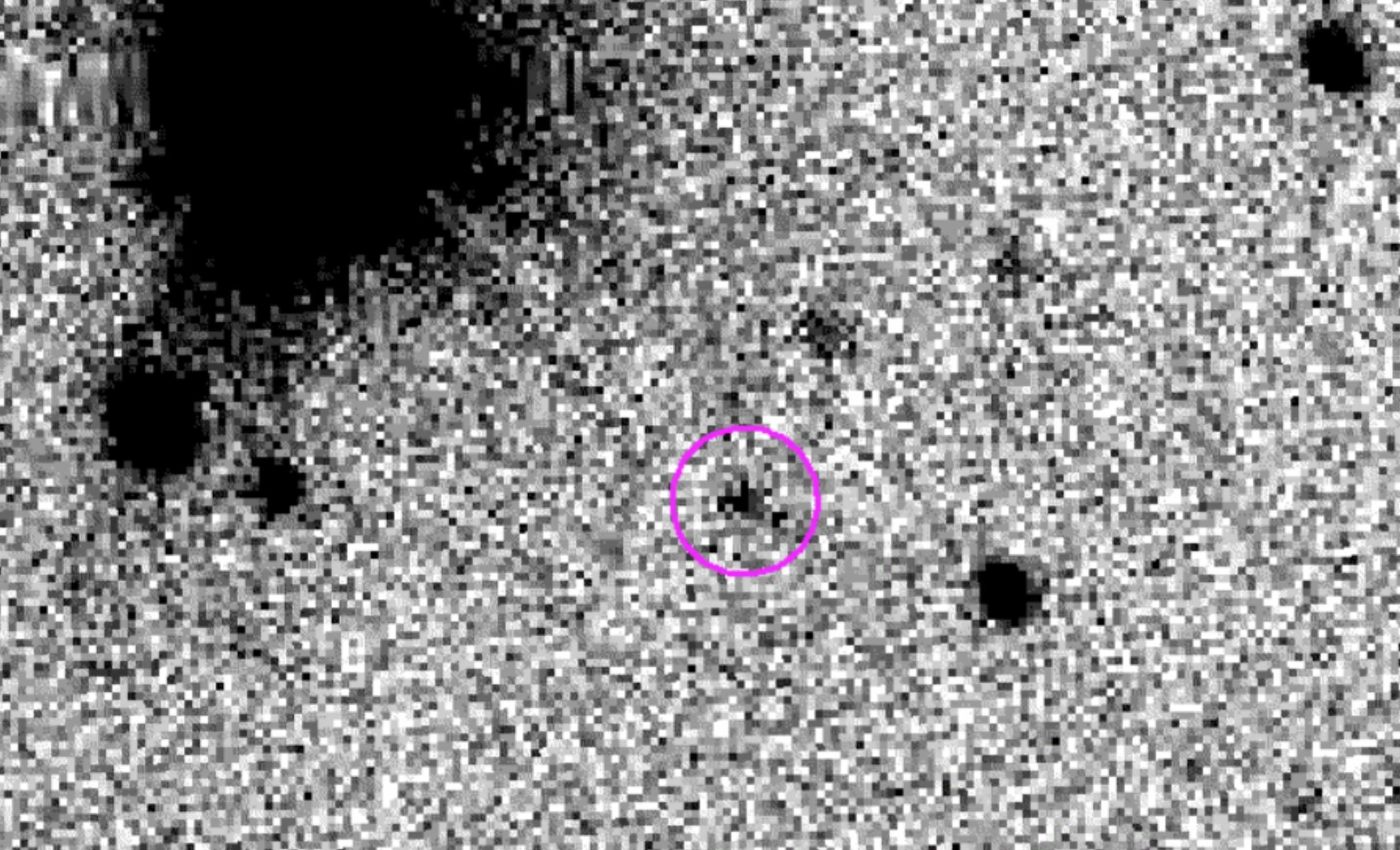
Astronomers discover a mysterious object that could rewrite the solar system's history
A new member of the solar system’s far outskirts refuses to follow the usual script. The object, 2023 KQ14, nicknamed Ammonite, belongs to a tiny class called sednoid, a rare kind of trans-Neptunian object that stays far beyond Neptune.
Its path does not line up with the three sednoids we already knew. That mismatch matters because it pressures ideas about a hidden outer planet and forces models of the early solar system to face new tests.
2023 KQ14 and its odd path
Lead author Ying-Tung Chen of the Academia Sinica Institute of Astronomy and Astrophysics (ASIAA) led the international team that found and analyzed Ammonite.
The team reports a perihelion of 66 astronomical unit and a semi-major axis of 252 astronomical units.
These numbers reveal that 2023 KQ14’s orbit remains stable over billions of years, and notes that if a distant planet exists, its present day orbit likely lies farther out, near 500 astronomical units.
An astronomical unit is the average Earth sun distance, about 93 million miles. Perihelion is the closest point to the sun in an orbit, while a semi-major axis is the orbit’s long radius, a measure that tracks the object’s average distance across that long path.
These numbers place Ammonite 2023 KQ14 far outside Neptune’s direct pull. That is why it helps scientists probe events that shaped the solar system more than 4 billion years ago.
Nineteen years stitched from old images
The discovery started with 2023 images from the Subaru Telescope and continued with 2024 follow up at the Canada France Hawaii Telescope (CFHT). A search of older observatory images extended the track across 19 years.
At discovery, the object sat roughly 71 astronomical units from the sun, about 6.6 billion miles. That distance helps explain why these bodies are so faint and so hard to spot.
Long time coverage is not a luxury here. It locks down an orbit that shifts so slowly that a single season of data can mislead you.
Why sednoids bend the rules
Most distant small bodies have closer perihelia and feel Neptune’s gravity strongly. Sednoids do not, which means something else must have raised their perihelia long ago.
With Ammonite 2023 KQ14, the catalog now includes four such objects. Each one adds a small but sharp constraint to how the outer solar system formed and evolved.
Ammonite also fills a long standing gap in the current census, a region with perihelia between about 50 and 75 astronomical units. That is a clue that formation processes did not skip that range, they just left very few bright targets.
Could 2023 KQ14 be Planet Nine?
Some researchers argue that a large, unseen planet sculpts these distant orbits. Others point to a passing star in the sun’s birth cluster, a long ago rogue planet, or even an ejected planet that once reshaped the outskirts.
If a hidden planet does exist, Ammonite suggests its present orbit would likely sit farther out than many earlier guesses. The team’s modeling ties a viable solution to orbits near 500 astronomical units.
That does not settle the debate. It sets a new target for where to look and how to test the idea.
Ammonite surfaced in FOSSIL, a survey that leverages Subaru’s wide camera to sweep large sky areas for faint, slow movers.
Subaru describes how this program’s cadence and depth are tuned to pick up precisely these distant bodies in its results.
Finding one sednoid in that sweet spot hints that more may be hiding just past current detection limits. Each new point will tighten or loosen the case for specific formation scenarios.
The survey’s design also supports quick follow up on targets that briefly sit in the right patch of sky. That was key for Ammonite’s 2024 recovery.
How a single orbit strains old ideas
2023 KQ14’s orbit points the other way compared with the earlier sednoids. That breaks a pattern some used as indirect support for a clustered, planet shepherded population.
It also sits in a region where mechanisms can keep an orbit stable without help from Neptune. Stability matters because it means the object likely preserves a fossil record of early events.
When simulations place Ammonite alongside the three known sednoids and wind the clock back, the group shows a tighter alignment about 4.2 billion years ago. That timing points to an early sculpting event rather than a recent tweak.
2023 KQ14 and Planet Nine
“Finding Ammonite is like discovering a missing piece of the puzzle at the Solar System’s frontier,” said Chen.
Work on Planet Nine has evolved over the past decade as more objects have been found and as sky surveys have ruled out parts of the map.
Analyses based on trans Neptunian orbits provide ranges of mass and distance that guide searches, including a semimajor axis of a few hundred astronomical units and a moderate tilt.
2023 KQ14 does not kill the Planet Nine idea. It narrows the parameter space and favors versions that place a planet farther out.
That, in turn, tells observers where to push deeper and which patches of sky deserve more time.
Four is a small number. Still, each sednoid is unique enough that together they map out what is possible and what is not.
This one appears to be a stable survivor from the solar system’s early years. That is exactly the kind of evidence needed to check whether theories are on the right track.
The study is published in Nature Astronomy.
—–
Like what you read? Subscribe to our newsletter for engaging articles, exclusive content, and the latest updates.
Check us out on EarthSnap, a free app brought to you by Eric Ralls and Earth.com.
—–













